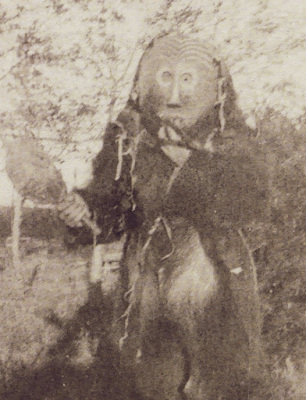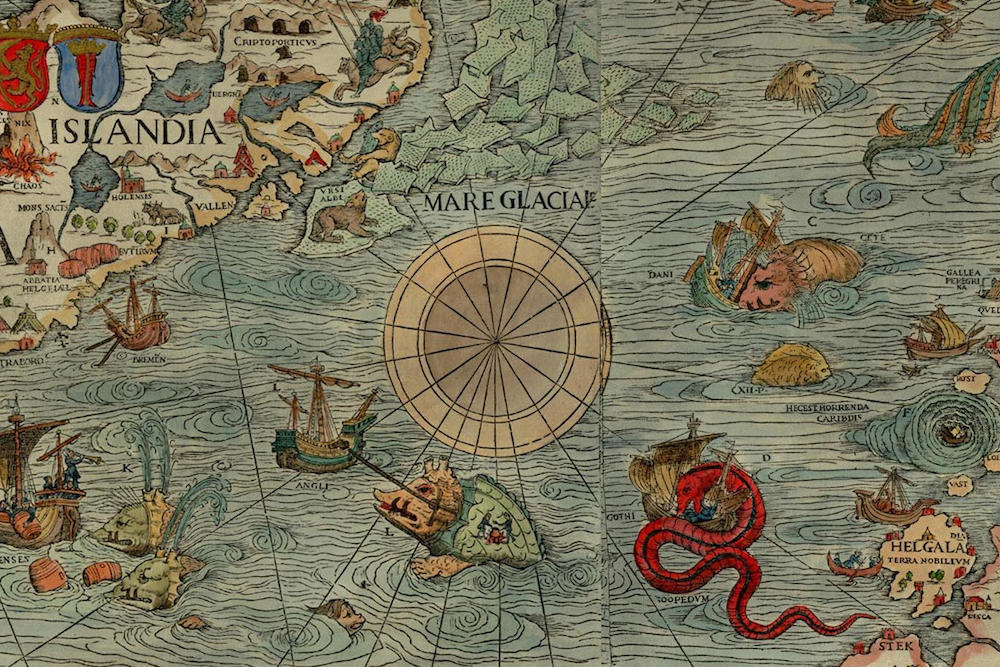 |
| Mësingw |
According to The Paris Review, in the collections of Seton Hall University in South Orange, New Jersey, there is a round ceramic disk, about the size and shape of a cobblestone, with the barest image of a face on it. There are two eyes in a mushroom-shaped head, and a mouth opened in a howl or scream. Radiocarbon dating puts its age at about seven hundred years old, which would make it one of the earliest known images of the Jersey Devil.
Growing up in New Jersey, I heard about the Jersey Devil long before I ever went into the Pinelands (AKA The Pine Barrens) of southern Jersey where the creature is supposed to live.
The first story I heard was that it was called originally the "Leeds Devil." Mother Leeds was in labor with her thirteenth child when she cried out “Let this one be a devil!” Apparently, the real Devil heard and took up the invitation and the hideous creature that came forth was able to flee the house on its own immediately.
 |
| One depiction of the European Jersey Devil |
That legend may have had some basis in the story of Anne Hutchinson, the Puritan leader who was expelled from the Massachusetts Bay Colony in 1637. After her expulsion, she gave birth to a “disturbing mass that bore little resemblance to a child. The Puritan devil-child explanation is now thought to have been "a molar pregnancy, in which a non-viable fertilized egg implants in the womb, resulting in a malformed mass of cells."
But a similar creature legend was known to the Lenape Indians who lived in Jersey before it was Jersey and before Europeans settled there, and that may have inspired our Jersey Devil.
The Lenape called it Mësingw. What is interesting - especially in the context of this blog - is that they did not view it as a monster but as a spirit that helped preserve the balance of the forest.Mësingw doesn't resemble the more modern depictions of the Jersey Devil. It could sometimes be seen riding through the forest on a large buck, covered in long, black hair from head to toe like a bear. The right side of his large, round face was colored bright red, the left side colored black. It was revered and feared. It both assured game in the forest and could avenge the mistreatment of the animals. It was a mediator.
White settlers saw Lenape images and masks of a strange creature who was supposed to live in the Pine Barrens which were at the edge of their settled world. To the Europeans, it looked more dangerous than benevolent.
But back to the Leeds connection. Daniel Leeds was an early New Jersey writer who brought English astrology to America and published astrological charts in his popular almanacs. This Devil legend was a warning to colonials about the dangers of living outside of the carefully controlled Puritan rules.
Like the monsters of sea and land that appear on the edge of civilization on old maps, the Jersey Devil lived in that strange Pinelands at the edge of civilization.
It is one of many cryptids — strange creatures that exist beyond the reach of civilized humanity. They live in those not easily accessible places, at the edges and in ld maps in the spaces that were blank because they were unknown.
I have written earlier about the legend of the Jersey Devil and it's a good tale to tell around a campfire, late at night, deep in the Pine Barrens - or on a chilly December night when there are strange sounds outside your window at the edge of your property. It is New Jersey's Bigfoot, Loch Ness monster, or whatever cryptid you imagine lives in your dark woods.
 |
| Monsters at the edge of the Olaus Magnus, Carta Marina map, 1539 |

No comments:
Post a Comment